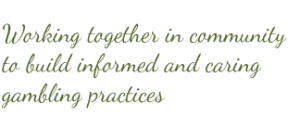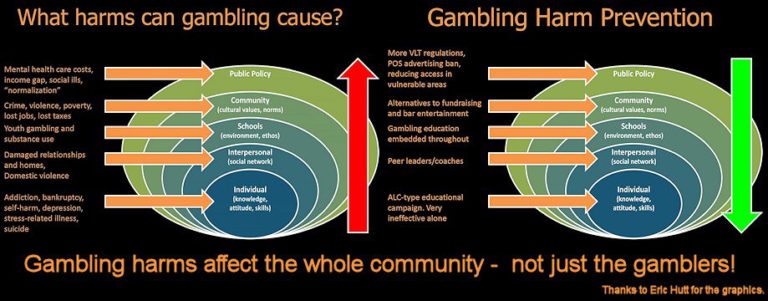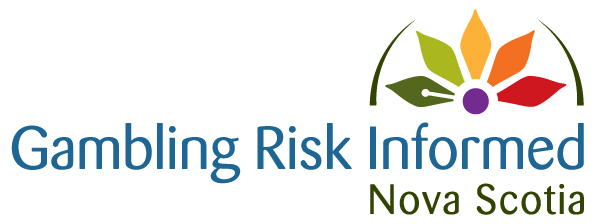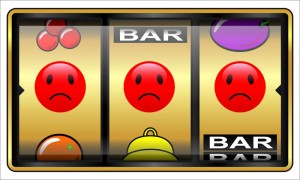Press Release re “My Play” removal
For immediate release. August 22, 2014
The Kings Community Action Group on Gambling (KCAGoG) would like to address our concerns with the province’s decision to abandon the My Play System for VLT gambling. This is a lost opportunity to reduce gambling harms to Nova Scotian citizens. The problems highlighted about the system were due to the flawed rollout that included the “light enrollment option” that did not require users to register. Our observations and conversations with VLT gamblers and venue staff indicate that the full benefits of the system were circumvented by this option and the card was being used primarily in the function of an on/off switch. Visits to VLT venues showed boxes overflowing with the cards and venue staff and VLT gamblers report discarding cards and getting new ones often multiple times during a VLT gambling session.
The benefits of the My-Play information tools (historical information, current gambling session information, the ability to set limits on time and money and the ability to restrict access to the VLT product) are redundant when in an aroused state the VLT gambler can simply remove the card and reverse any previous decisions taken to set limits by replacing it with another “light enrollment” card.
We believe that the light enrollment option is contrary to the harm minimization objective of the My Play system and advocate for the single option of universal, mandatory full enrollment to optimize system benefits for gamblers. We had numerous conversations about the possibility that this ineffective roll out of the system would be framed as inherent system flaws and wasteful use of money and that there may be a move to in effect “throw the baby out with the bathwater”. Unfortunately this is the direction the government has decided to take.
Contrary to the claims made, the research on the My Play and similar systems (GANS-2011) shows very positive results in reducing harm when the cards are mandatory and unique to the individual, but limited to no impact with “light” enrollment. In other words, despite documented evidence of the effectiveness of full enrollment, the government chose to ignore this and use the ineffective implementation.
The experience of Norway is a useful comparison. They had widespread access to gaming machines with no limits placed on users. Seeing the problems this created, the machines were banned for two years (2007-2009) while safer policies and technologies were developed. There was very minimal crossover to other forms of gambling during this time, refuting the idea that removing VLTs would just mean replacement by other harmful forms of gambling. In 2009 they re-introduced the machines with a mandatory set of controls that included global limits (applies to everyone) of about $75 a day and about $400 a month, plus the ability for individuals to set further limits on times and amounts, including optional exclusion. There was a large drop in calls to the gambling help line after the machines were removed, and no significant increase when the new system was introduced. Predictably, the revenue with the new system was significantly lower. However, revenue from VLTs can be considered a measure of harm, as it removes resources from citizens, so this, along with the reduced need for a help line, can be interpreted as a real reduction in harm. We have an opportunity to learn from Norway’s experience and retain and expand the My Play system to safeguard the well-being of Nova Scotia citizens.
KCAGoG is not an anti-gambling group and we do not advocate banning gambling. We are concerned with reducing the harmful effects of gambling. It is widely understood that VLTs and similar rapid-response electronic gambling machines are the most harmful form of gambling. About one in four regular users of VLTs are at risk of problem gambling or are already experiencing problems (GPI, p.23). Almost half of the revenue from VLTs in Nova Scotia comes from those identified as “problem gamblers”. (GPI, p.22). Unlike cigarettes and alcohol, there are no warnings on each machine to disclose the dangers of dependency, and so the users are unable to give informed consent to engage in risky behaviour. Brain Scans of regular cocaine users and regular VLT users show similar patterns. These risks indicate an increased responsibility on the part of government to implement harm reduction policies.
We call upon our provincial government to look beyond the short-term financial gains at the expense of the health and safety of its citizens, and rethink the removal of the one tool we have that can, if implemented correctly, significantly reduce harms.
Download PDF: KCAGoG (GRINS) press release re My Play






